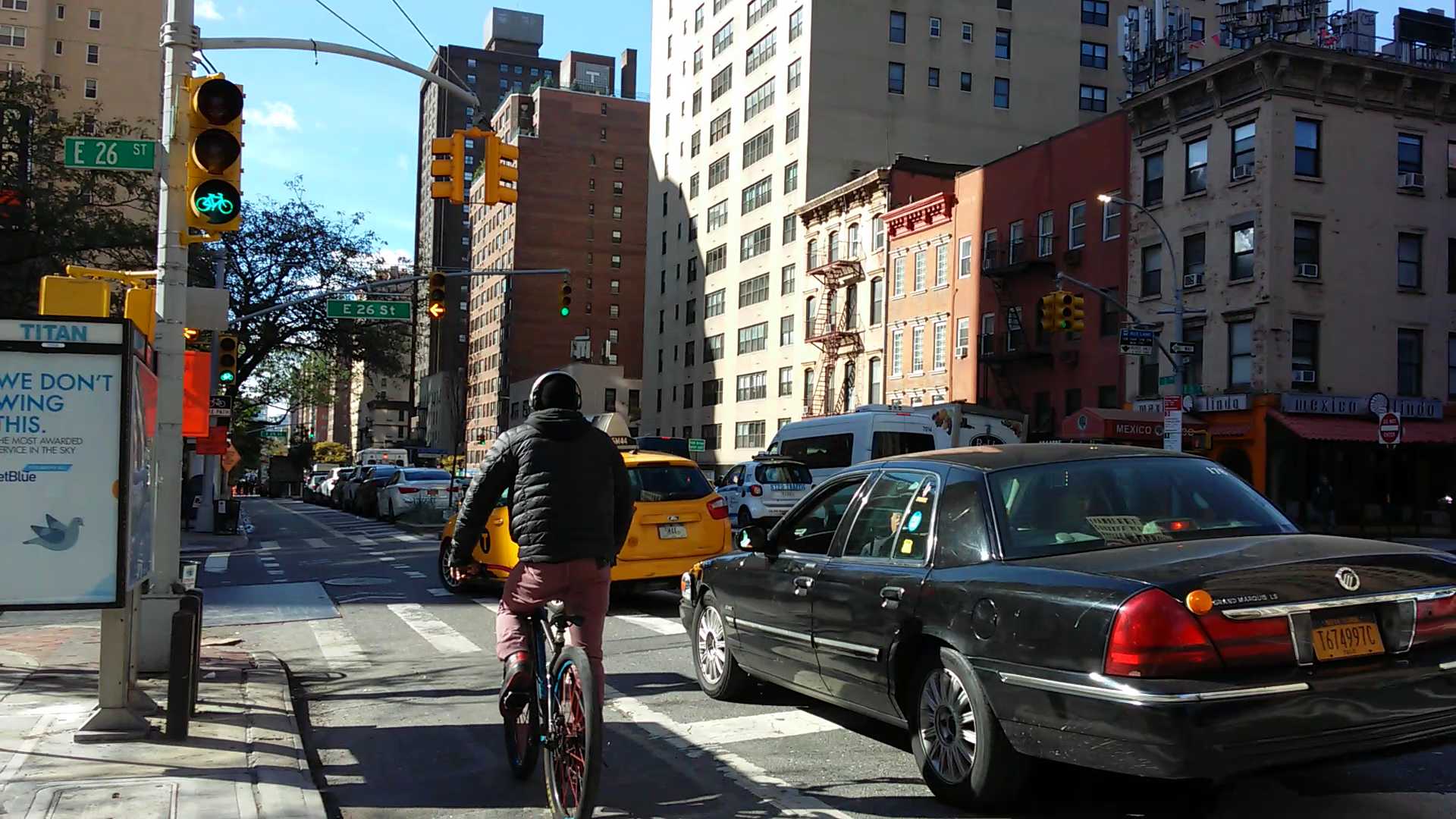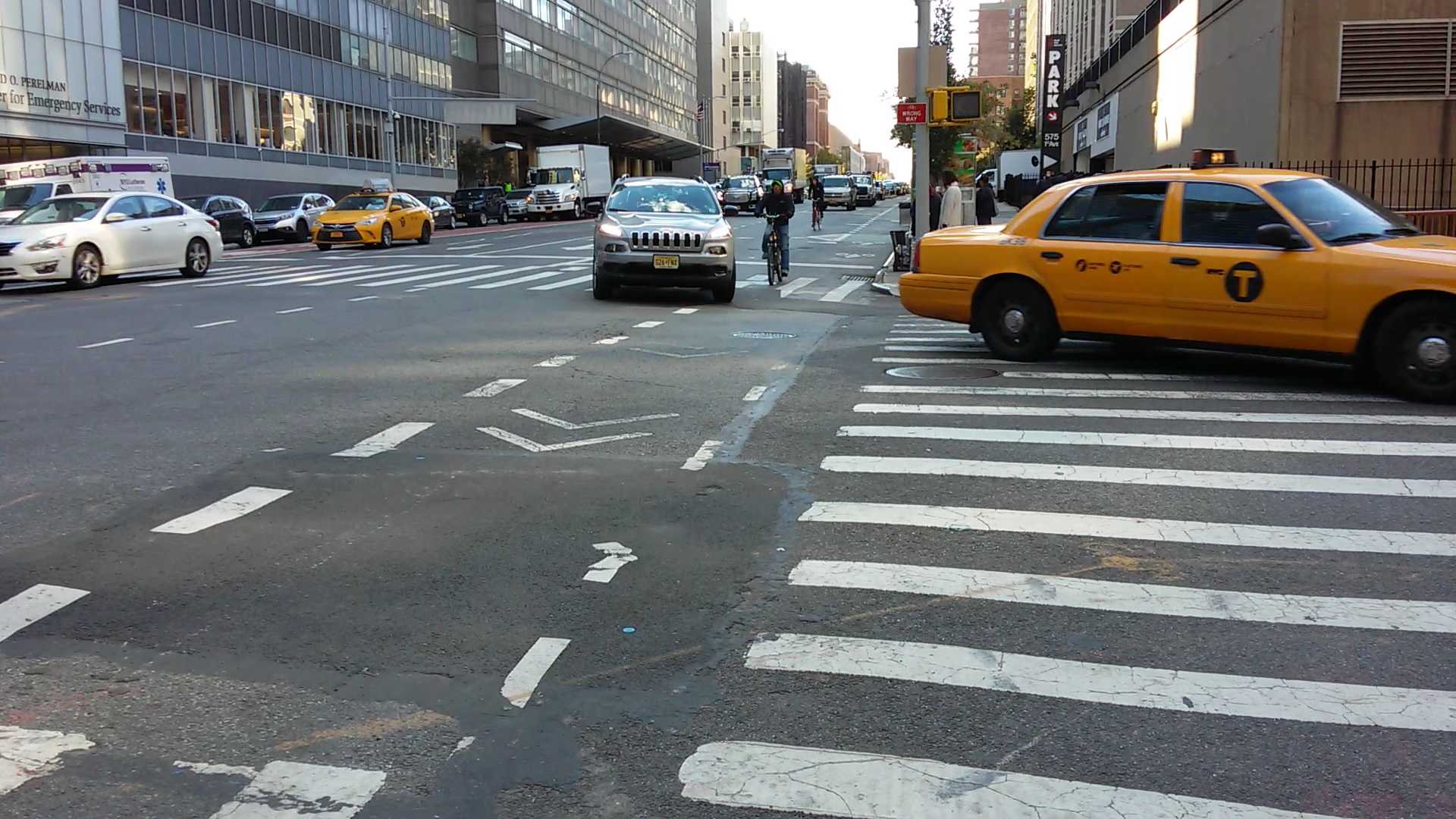My final destination - New York, New York (note: since I've had Frank Sinatra in my head for the last five days, I seriously considered writing this blog to his tune, but decided to spare you). The flashing lights here are not limited to Broadway - the NYC Department of Transport has joined the party and started operating flashing yellow arrows at certain signalised intersections. This originally started as a way of reminding drivers to give way to pedestrians at intersection crosswalks, and has been extended to certain sites with protected bike lanes.
The flashing yellow arrows makes it possible to operate a head start for bicyclists followed by filter turning. In the USA traffic signal requirements, there is a principle of "conservation of arrows" i.e. if an arrow signal aspect is used, there must always be an arrow displayed (red, yellow, or green). This is different to New Zealand requirements, as we have the possibility of allowing filter turning display a red arrow at the start of the phase in conjunction with a green disc, then extinguish the red arrow leaving only the green disc displayed. While it may not be necessary in New Zealand, it might be worth considering flashing yellow arrows for the added benefit of making drivers more aware of the need to take caution. That said, we'd face the same challenges that NYC DoT is currently encountering in terms of communicating to road users what the flashing arrows really mean - having been introduced to the toolkit in 2009, they're still a relatively new device and not always properly understood. Or maybe that's just because New Yorkers seem to treat traffic lights as suggestive indications in general anyway.

I've mentioned the prevalence of one-way streets at some of the other cities I visited, but Manhattan really takes the cake on that one. Most of the protected bike lanes in the city are on one-way streets (while I personally found the coverage really good, I also saw a lot of wrong-way cycling). The standard New York treatment for protected bike lanes at the intersection of two one-way streets where the turning movement is across the PBL is a mixing zone. Thus I got to see many in action. "Mixing" is definitely a common concept here (people in cars, on bikes and on foot seem to work their way through congestion as they please) but perhaps not always in the ordered and gentle way that the mixing zone concept really intends. The NYC DoT still see their mixing zones as a work in progress. My main hesitation is that often cyclists still remain in a kerbside position and end up on the wrong side of a turning vehicle. I think the positioning of sharrow markings in a kerbside position and reasonably wide lane widths contribute to this. The key point is that mixing zones should slow vehicles down and draw users' attention to the situation, while providing some flexibility. I think mixing zones could be a useful tool to use in certain New Zealand locations, especially if we work on developing a layout that encourages true, single-file mixing.
My study tour began with a workshop on the new Global Street Design Guide at the NACTO conference. One month later, my final study visit was to the NACTO HQ in New York, where I met with some of the team and was presented with a copy of the Global Street Design Guide. A great way to complete the circle and conclude my tour. The real work, however, is yet to come. In the coming months I'll be developing a report on all I've learnt through this study and will give a summary presentation at the next IPENZ conference.


